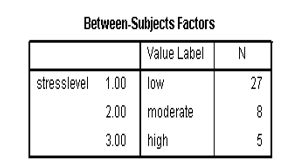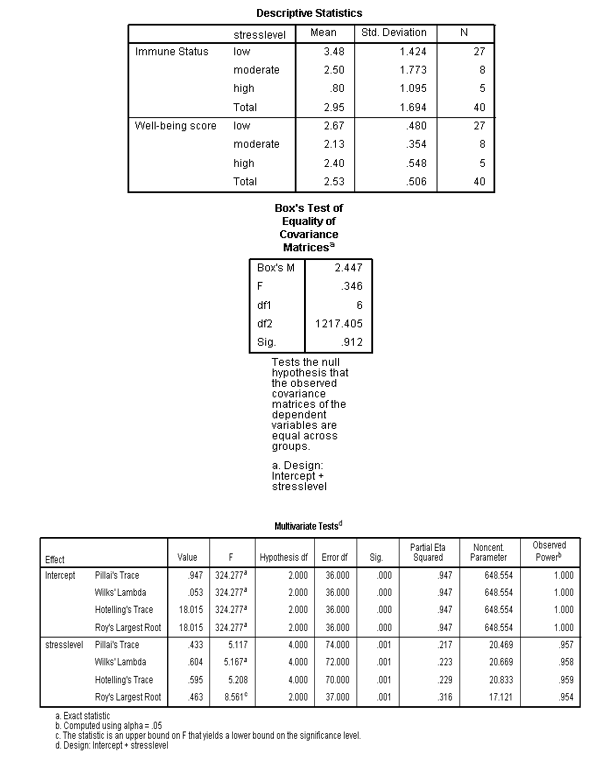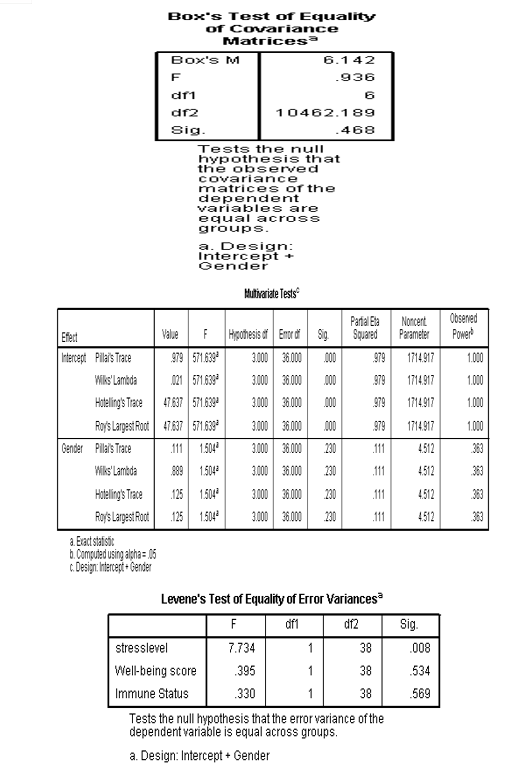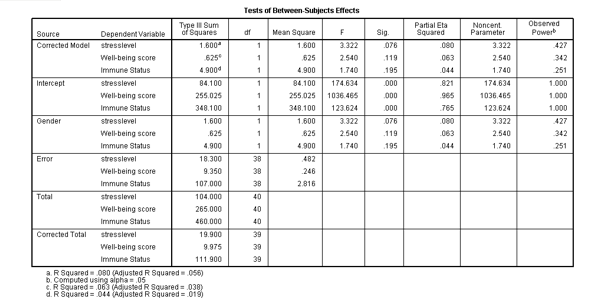Ijraset Journal For Research in Applied Science and Engineering Technology
- Home / Ijraset
- On This Page
- Abstract
- Introduction
- Conclusion
- References
- Copyright
Impact of Chronic Stress on Human Body, Immunity and Wellbeing
Authors: Manisha Mantoo
DOI Link: https://doi.org/10.22214/ijraset.2023.55873
Certificate: View Certificate
Abstract
Every internal or external stimulant which is concerned with natural bodily reaction is labeled as stress. Stress favors a broad variety of diseases including hypertension, diabetes, irregular sleep patterns, superior plasma cortisols, obesity, cardiac diseases, cancer and depression. Stress happens in three stages - alarming (initial stage when body encounters stress and asks for the adrenaline rush), resisting (body secretes stress hormones and elevates blood sugar level to handle the problem) and exhausting stage (final stage when body utilized all its resources to carry a prolonged fight or flight response).This paper studies the impact of acute and chronic stressors on the human body- immunity and well-being. The sample of the study consisted of 40 people of age group 25-55. Stress was measured through a self administered questionnaire while immunity and well-being of the person is assessed by the Immune Status Questionnaire (ISQ) and the Core Questionnaire for Wellbeing (WEMWBS).
Introduction
I. INTRODUCTION
Any natural occurring phenomena which demands for more resources than we have at a current moment leads to stress. Stress is a natural response or bodily reaction to outer demands. Any stimuli that disrupt physiological homeostasis are called stressors. These severe stressors ranging from acute to chronic can also lead to life threatening effects or even death. Getting late for a meeting, unable to cope up with the problem, work deadlines, sudden plans etc can act as a stressor which can trigger the body's ‘fight or flight’ response. This natural bodily response to any stressor is designed to protect the body and work as a survival agent. But if these stress levels remain uplifted for a longer period of time for survival, it can put a heavy charge on the human body. The stress response, whether acute or chronic, becomes maladaptive if repetitive or prolonged, which can cause depression, cardiovascular diseases, diabetes, hypertension etc.
II. CLASSIFICATION OF STRESS
It is not true to say that stress is always bad or destructive, sometimes stress acts as a surviving agent and increases the performance. The level of stress that is good for achieving peak performance and managing daily crises is labeled as ‘Eustress’, whereas ‘Distress’ is something which causes the body's wear and tear and is perceived as negative or destructive.
A. Stressors: Acute or Chronic
Any stimuli which cause tension or strain to an organism and perceived as a demanding, challenging and life threatening event is called stressor. A stressor can be assumed as physical (injury, unable to fall asleep, lack of nutritional diet), psychological (internal pressure or conflicts) emotional (frustration, anxiety and worry) or social (family, relationships, trouble with neighbors etc). People usually experience stress when they assume an event inappropriate to their desire. Degree of stress varies from individual to individual, how they perceive an event.
Our body responds to stressful situations in its own way by releasing many stress hormones which may increase our heart and breathing rates or may lead to muscle tension for survival. But if our body doesn't stop releasing such stress hormones and stay for a longer period of time, it may act as a chronic stress that affects overall well-being which includes - depression, diabetes, insomnia etc.
B. Stress and Human Body
It is very common to perceive a situation as fearful and stressful. In such stressful situations, our central nervous system gets activated and responds in a ‘fight or flight’ mechanism. The hypothalamus in the brain sends the signal to the adrenal gland to release as many stress hormones as it can, mainly adrenaline and cortisols.
These stress hormones spur up the heartbeat and blood sugar level and send it to the areas that need it most for survival. If the central nervous system fails to normalize the bodily disruption, it may end up having strokes or heart attacks or may lead to sleep or eating disorders.
C. Stress and Immune System
It has been considered for decades that people who are frequently getting stressed are more likely to experience impaired immune systems, and may suffer from more frequent illnesses. Melancholic, depressed and pessimistic people, especially women, who are more exposed to negativity, are more likely to have cancer. Overgrowing research shows that stress related psychosocial factors have a significant role in concatenation of cancer. The long lasting stress and challenging demands continuously work in suppressing the immune system. Other than immunosuppression, long term stress can also lead to cessation in the release of growth hormones or secretion of thyroxin.
D. Stress and Mental Health
It has been clearly seen from the studies of the last two decades that stress which is induced by socially challenging situations manifest itself into many psychological illnesses. Stressful events as daily hassles and life trauma results in poor mental health. When the body undergoes certain changes, it is assumed to create a disequilibrium among various parts of the body. There is a continuous struggle to reestablish a homeostasis. Prolonged struggle for readjustment can be exhausting and frustrating. Under such circumstances, the body becomes extremely vulnerable to stress and its psychological and mental consequences.
E. Other Effects of Stress on Human Health
As we know, there are various effects of stress on human health. Some are psychological, emotional, cognitive and behavioral. People who suffer from stress are more likely to experience mood swings, inability to make clear decisions, lack of concentration, reduced short term memory, poor coordination, disrupted sleep patterns, dizziness, often intake of caffeine, excessive consumption of alcohol and cigarettes, frequent absenteeism, showing inconsistent behavior and detachment from friends and family.
F. Stress and Sleep Patterns
Sleep helps the body to repair and restore the body's wear and tear. It repairs the body’s all day fatigue and acts as an important ingredient for survival. A good and sound sleep also facilitates learning and leads to better memory retention. From the past few decades, there has been a change in a lifestyle which is directly or indirectly affecting the sleep pattern. Wide exposure to stress disrupts sleep patterns, resulting in irregularity of sleep, difficulty in falling asleep and staying asleep. There are various sleep factors which respond to stress such as family history, gender, age and environment. Further, disrupted sleep cycles encourage dysregulation in the autonomic nervous system and HPA axis.
III. LITERATURE REVIEW
Morera LP, Marchiori GN, Medrano LA, Defagó MD. (2019) suggested that prolonged and chronic stress can cause cardiac disease and heart strokes. It's very common for people to prefer high caloric and hyperpalatable foods when they are under chronic stress. The severe stress conditions can also create the predisposition to the development of various diseases such as obesity, diabetes, metabolic syndrome and cardiovascular disease.
Khansari DN, Murgo AJ, Faith RE (1990) claimed that stress arbitrators can pass through the blood-brain barrier and exercise their effect on the immune system.
Stress, being associated with immunosuppression, affects the functioning of the immune system by modulating processes in the central nervous system and neuroendocrine system.
In about 200 AC, Aelius Galenus (Galen of Pergamon) declared that women who are more depressed and gloomy (who have high levels of stress and, thus, impaired immune function) are more likely to have cancer than women who were more positive and exposed to less stress (Reiche et al., 2004).
According to the American Psychological Association (2004), nearly thirty seven percent of people from the targeted population sample report fatigue or feel tired because of stress. People under stress reported difficulty in falling asleep or sleeping less than eight hours as compared to those who do not experience stress.
As suggested by Breus M. (2022), prolonged chronic stress causes dysregulation of sleep cycle. People who experience more stress are more likely to find difficulty in falling asleep and report poor quality of sleep at night.
According to Holden C. (2005) and Lundberg U. (2005), various mental and physical disorders have sex-specific prevalence rates. Pathologies such as anxiety, stress or depression are more prevalent among women than men. Also, an increased sensitivity of adrenal cortex results in greater stress has been observed in women than men.
A. Hypothesis
H1: Chronic stress negatively affects the well-being of a person.
H2: Females are more prone to stress and experience low immunity and well-being.
H3: Repetitive stressful stimuli weakens the immune system.
B. Methodology
- Tools And Procedure
a. Core Questionnaire for Wellbeing: Warwick Edinburgh Mental Well-being Scale (WEMWBS)-
Core questionnaire for wellbeing is validated for measuring wellbeing of adults aged over 16 years old. This questionnaire is jointly developed by the University of Warwick and the University of Edinburgh. There are a total of 14 items in this questionnaire with five alternative options which are marked as- 1 (none of the time), 2 (Rarely), 3 (Some of the time), 4 (Often) and 5 (All of the time). Scoring is done by adding the numbered responses to each question. The final score ranges from 14 to 70 which measures wellbeing as low. average and high.
b. Immune Status Questionnaire (ISQ)-
Immune status questionnaire broadly consists of seven items which are scored on a Likert Scale ranging from Never (0), Sometimes (1), Regularly (2), Often (3) to Almost (4). Scores are calculated by adding up the scores on each item and subsequently convert the raw score into final score ranging from 0 (poor) to 10 (excellent). The proposed cut off of ISQ score for reduced immune functioning is 5.
c. Stress Questionnaire-
It is a self administrated stress questionnaire. It consists of 24 items asking recent experiences under stress over the past one month. The items are scored in true dichotomy, i.e 1 for yes and 0 for no. There are few items of reversed scoring. Final scoring can be done by adding up the scores on each individual item.
2. Data analysis and result
The above study was done to observe the relationship between stress and the human body. The main concern of the study was to observe how chronic stress affects the human body, immunity and the well-being of an individual. The respondents were distributed as follows: 20 were females of age group 25-55 and 20 were male of the same age group. Manova was used to test the following hypotheses: that prolonged stress would reduce the person’s immunity and also lower down the person’s well-being. It also tests that females are more prone to stress and have low immunity and well-being than males. The result shows a positive significant difference between stress and well-being at Levene’s test of equality of error variance (0.009) p < 0.05, but no significant difference between stress and immunity (0.651) p > 0.05. The p value (0.002 < 0.05) in the Test of Between Subjects effects mentioned below tells us that the interaction effect between stress and immunity is significantly positive and also p value (0.020 < 0.05) in the Test of Between Subjects effects shows a positive significant difference between the stress and well-being interaction effect. Though, it has been proven that females are more likely to experience stress than males. But there is no such evidence in support of females being more prone to have stress and result in low immunity as compared to male.
3. Table statistics





Conclusion
This study was conducted to measure the stress level among males and females and to assess its effect on their well-being and immunity. After conducting the study it was proven that though stress varies from gender to gender but its effect on well-being and immunity is quite the same across the genders. It is sure that the stress can lower down the individual’s immunity and well-being. But, according to Ashton and Lee’s Type-H personality, a person even under great stress can manage his/her well-being by looking at the stressful situations as challenging. They have a very great sense of confidence and control over their lives. They have an assertive nature and don’t get disheartened when things are not according to their wish or desire. A person under great stress can practice mindfulness techniques in order to stay healthy physically, mentally and emotionally. Practicing yoga and relaxation techniques increases the blood oxygen level in the brain and hence, lightens the heart, clears the mind from all the irrational thoughts and improves the well-being of an individual.
References
[1] Habib, Y., Yunes, P., Hedayat S., Thomas J.P., & Amirhossein, S. The impact of stress on body function: A review. PMID: 28900385. PMCID: PMC5579396. DOI: 10.17179/excli 2017-480 [2] Martire, V. L., Caruso, D., Palagini, L., Zoccoli, G., & Bastianini, S. (2019). Stress & sleep: A relationship lasting a lifetime. Neuroscience & Biobehavioral Reviews. doi: 10.1016/j.neubiorev.2019.08.024 [3] Yaribeygi, H., Panahi, Y., Sahraei, H., Johnston, T. P., & Sahebkar, A. (2017). The impact of stress on body function: A review. EXCLI journal, 16, 1057–1072. doi:10.17179/excli2017-480 [4] Morera LP, Marchiori GN, Medrano LA, Defagó MD. Stress, Dietary Patterns and Cardiovascular Disease: A Mini-Review. Front Neurosci. 2019 Nov 12;13:1226 [5] American Psychological Association. (2004, May). More sleep would make most Americans happier, healthier and safer. Retrieved from http://www.apa.org/topics/sleep/deprivation-consequences. [6] Breus M. (2022), Sleep and Stress. Retrieved from https://thesleepdoctor.com/mental-health/stress-and-sleep/ [7] Holden C. Sex and the suffering brain. Science. 2005;308:1574. [PubMed] [Google Scholar [8] Lundberg U. Stress hormones in health and illness: The roles of work and gender. Psychoneuroendocrinology. 2005;30:1017–21. [PubMed] [Google Scholar]
Copyright
Copyright © 2023 Manisha Mantoo. This is an open access article distributed under the Creative Commons Attribution License, which permits unrestricted use, distribution, and reproduction in any medium, provided the original work is properly cited.

Download Paper
Paper Id : IJRASET55873
Publish Date : 2023-09-25
ISSN : 2321-9653
Publisher Name : IJRASET
DOI Link : Click Here
 Submit Paper Online
Submit Paper Online

